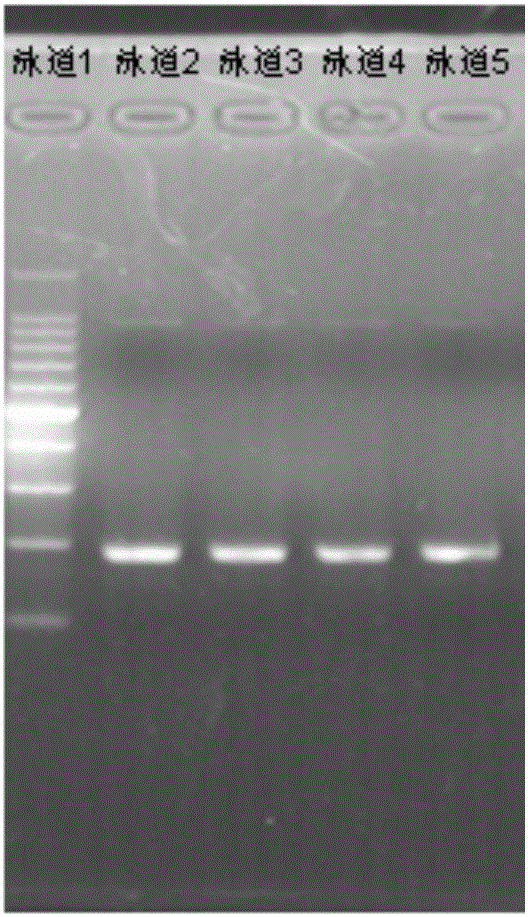Preparation method of gene dna sequence capture probe
A technology of DNA sequence and capture probe, which is applied in the field of molecular biology, can solve the problems of demanding diagnostic market costs and the inability of whole genome sequencing to enter the molecular diagnostic market, and achieve rapid and efficient preparation, concise operation steps, and high efficiency. Effect
- Summary
- Abstract
- Description
- Claims
- Application Information
AI Technical Summary
Problems solved by technology
Method used
Image
Examples
Embodiment 1
[0062] Example 1: In order to test the effectiveness of the probe preparation method described in the present invention, the present invention selected a target gene GSTP1 (genbank number in the NCBI database is NM_000852.3), and tested the preparation of the capture probe for this gene. Effectiveness and efficiency, specifically, include the following steps:
[0063] 1. Design primers for the DNA sequence of the coding region of the target gene GSTP1 for PCR amplification:
[0064] Synthetic primers:
[0065] Seq1F: 5'-CTACACCGTGGTCTATTTCC-3'
[0066] Seq1R: 5'-CAGGGTGAGGTCTCCGTC-3'
[0067] Seq2F: 5'-CAAGTTCCAGGACGGAGA-3'
[0068] Seq2R: 5'-CGCCTCATAGTTGGTGTAGAT-3'
[0069] Seq3F: 5'-CATCTCCCTCATCTACACCAA-3'
[0070] Seq3R: 5'-CTCATGGATCAGCAGCAAGT-3'
[0071] Seq4F: 5'-CTTCGCTGACTACAACCTG-3'
[0072] Seq4R: 5'-ACTGTTTCCCGTTGCCATT-3';
[0073] The target fragment size is 180bp, and the amplification products are named A1-1, A1-2, A1-3, A1-4. For the amplification resu...
PUM
 Login to View More
Login to View More Abstract
Description
Claims
Application Information
 Login to View More
Login to View More - R&D
- Intellectual Property
- Life Sciences
- Materials
- Tech Scout
- Unparalleled Data Quality
- Higher Quality Content
- 60% Fewer Hallucinations
Browse by: Latest US Patents, China's latest patents, Technical Efficacy Thesaurus, Application Domain, Technology Topic, Popular Technical Reports.
© 2025 PatSnap. All rights reserved.Legal|Privacy policy|Modern Slavery Act Transparency Statement|Sitemap|About US| Contact US: help@patsnap.com



